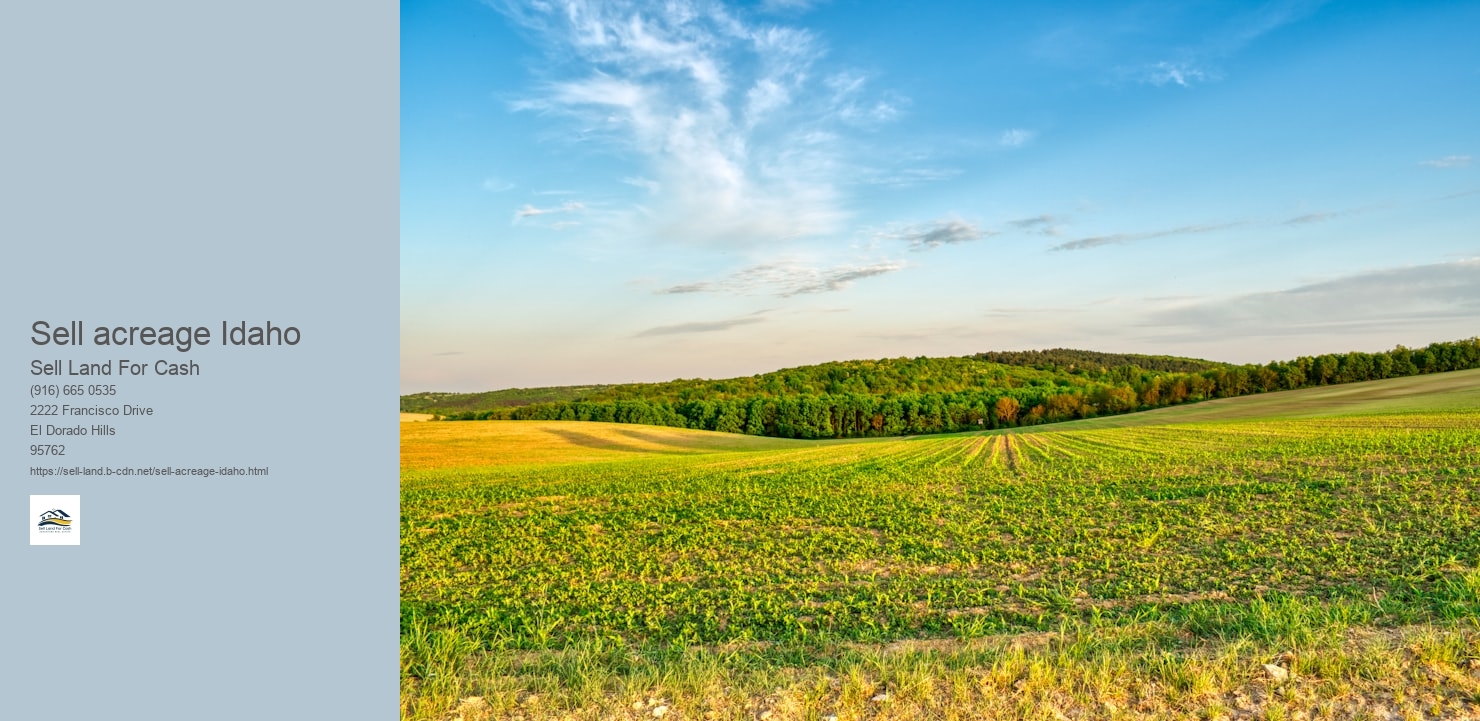

When selling Idaho land for cash, there are several legal documents that are required to ensure the transaction is legitimate and legally binding.
Title Deed: A title deed is a legal document that proves ownership of the land being sold. It includes information such as the legal description of the property, the name of the current owner, and any existing liens or encumbrances on the property. A title deed must be transferred to the buyer upon completion of the sale.
Purchase Agreement: A purchase agreement is a contract between the buyer and seller that outlines the terms and conditions of the sale. This document typically includes details such as the purchase price, payment terms, closing date, and any contingencies that must be met before the sale can be finalized. Both parties must sign this agreement to make it legally binding.
Disclosure Forms: In Idaho, sellers are required to provide certain disclosure forms to buyers when selling real estate. These forms disclose important information about the property, such as known defects or issues, environmental hazards, and any other material facts that may affect the buyer's decision to purchase the land. Failure to provide these disclosures could result in legal consequences for the seller.
Closing Documents: During the closing process, several important documents will need to be signed by both parties in order to transfer ownership of the land from seller to buyer. These documents may include a bill of sale, transfer tax declarations, and any additional paperwork required by local regulations or lending institutions involved in financing the purchase. It is important for both parties to carefully review and sign these documents to ensure a smooth and legally compliant transaction.
Selling Idaho land for cash can have several potential tax implications that sellers should be aware of before completing the transaction.
Capital gains tax: When selling Idaho land for cash, sellers may be subject to capital gains tax on any profit made from the sale. Capital gains tax is calculated based on the difference between the purchase price and the selling price of the land. It's important for sellers to accurately determine their cost basis in order to calculate their capital gains tax liability.
1031 exchange: One way to potentially defer paying capital gains tax when selling Idaho land for cash is through a 1031 exchange. This allows sellers to reinvest the proceeds from the sale into a like-kind property within a certain timeframe, typically 180 days. By following strict IRS guidelines, sellers can defer paying capital gains tax until they eventually sell their replacement property.
State taxes: In addition to federal taxes, sellers of Idaho land may also be subject to state taxes on the sale. It's important for sellers to understand their state's specific tax laws and regulations regarding real estate transactions in order to properly plan for any potential tax liabilities.
Depreciation recapture: If the seller has claimed depreciation on their Idaho land while it was used for business or rental purposes, they may be subject to depreciation recapture upon its sale. Depreciation recapture requires sellers to pay back some of the depreciation deductions they previously claimed, which can impact their overall tax liability.
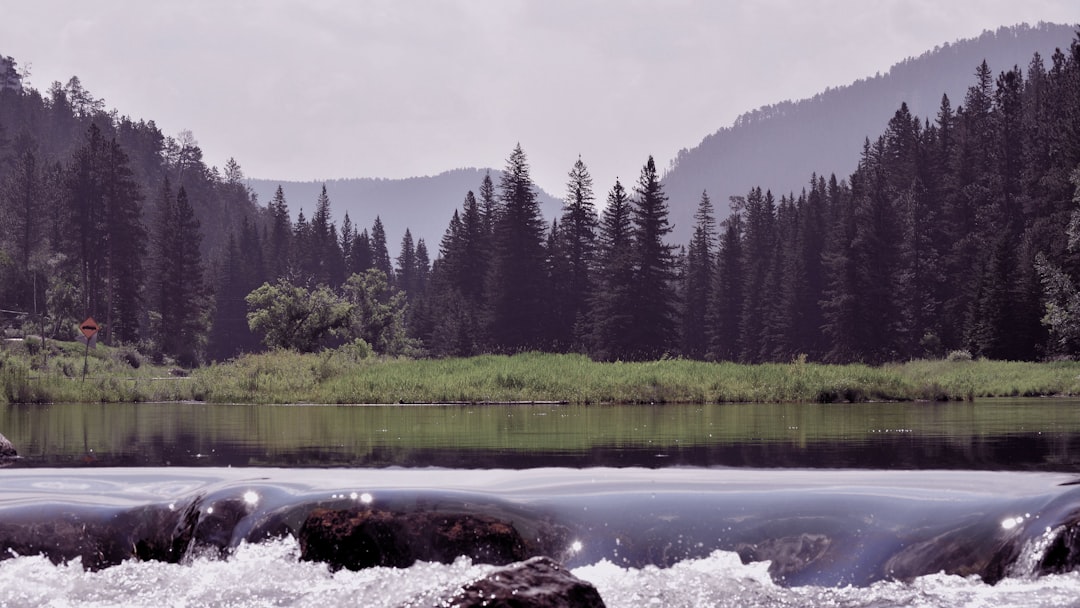
Selling land quickly, particularly in a state like Idaho with its picturesque landscapes and growing real estate market, can be a rewarding endeavor if approached strategically.. Here’s a comprehensive guide to selling your Idaho land for cash at lightning speed.
Posted by on 2024-09-30

Selling a property can be both a thrilling and daunting experience, especially when you need to secure cash quickly.. If you own property in Idaho and are seeking immediate financial liquidity, it's crucial to adopt the best strategy tailored to achieving this goal efficiently.
Posted by on 2024-09-30

Selling land in Idaho, or anywhere for that matter, can be a rewarding yet complex endeavor.. To successfully sell your Idaho land for immediate payment, there are several critical steps and considerations to take into account.
Posted by on 2024-09-30
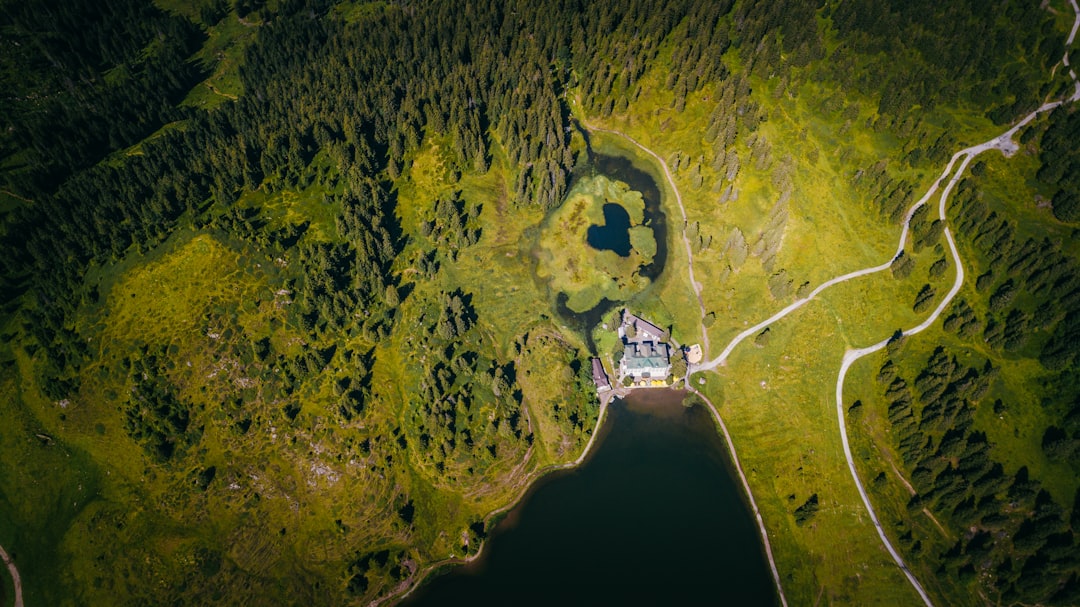
Selling your Idaho land quickly for cash can be a straightforward yet rewarding process if you follow the right steps.. Whether you’re looking to liquidate assets, relocate, or simply prefer the convenience of a fast sale, understanding the intricacies involved can help you achieve your goal efficiently.
Posted by on 2024-08-30
If you are looking to sell your Idaho land quickly for cash, there are several strategies you can employ to make the process smooth and efficient.
First, it is essential to ensure that your property is in good condition and ready for sale. This includes making any necessary repairs or improvements to increase its appeal to potential buyers. Consider investing in landscaping or updating outdated features to attract more interest from buyers.
Next, pricing your land competitively is crucial to selling it quickly. Research the market and comparable properties in the area to determine a fair asking price. Setting a realistic price will help generate interest and offers from serious buyers.
Marketing your Idaho land effectively is another key factor in selling it quickly for cash. Utilize online listing platforms, social media, and real estate websites to reach a wider audience of potential buyers. Consider hiring a professional photographer to showcase the beauty of your land in photos and videos.
Lastly, consider working with a reputable real estate agent or cash buyer who specializes in purchasing land quickly. These professionals have experience navigating the selling process and can help expedite the sale of your Idaho land for cash. Be sure to do your research and choose a partner who has a proven track record of successful transactions.
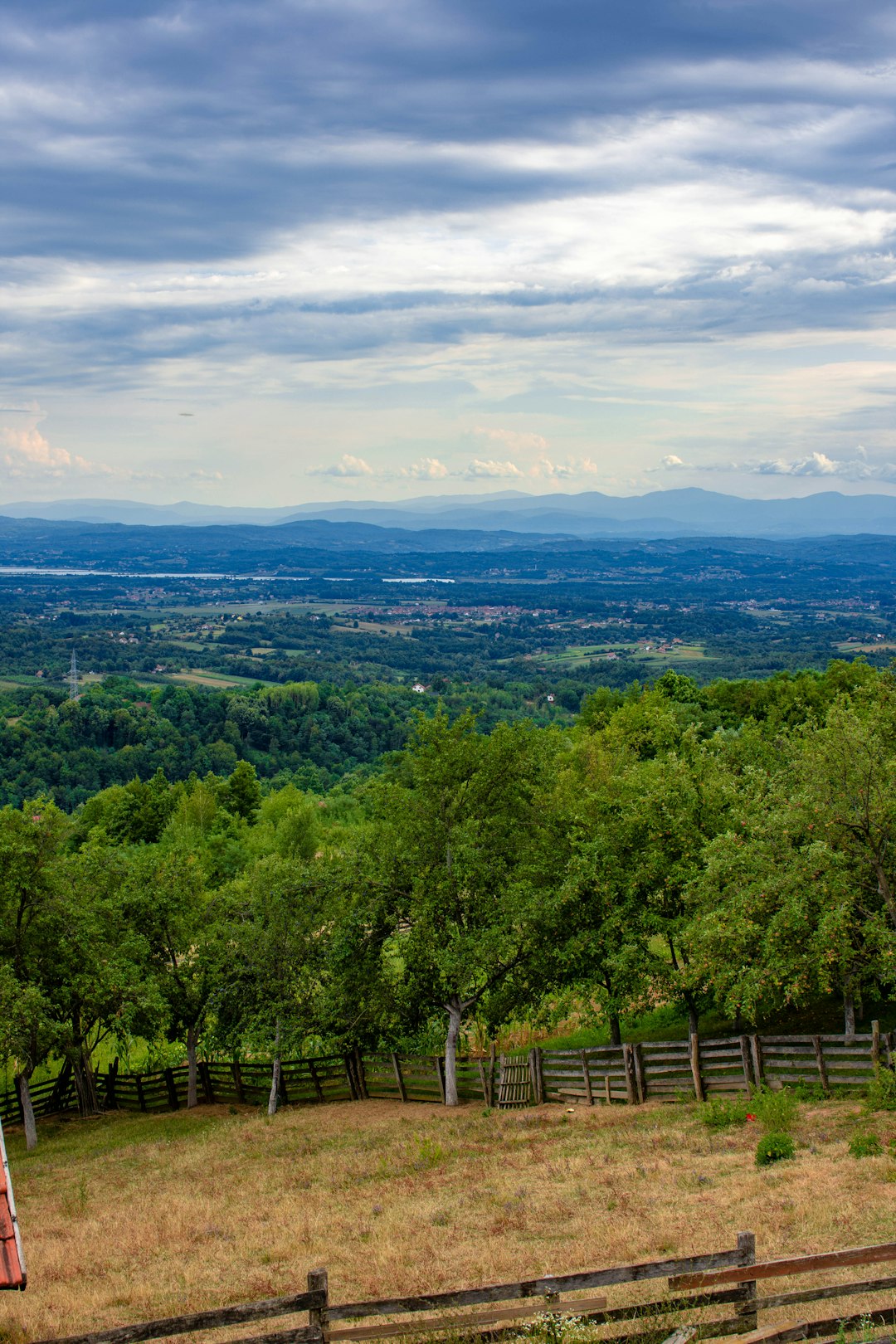
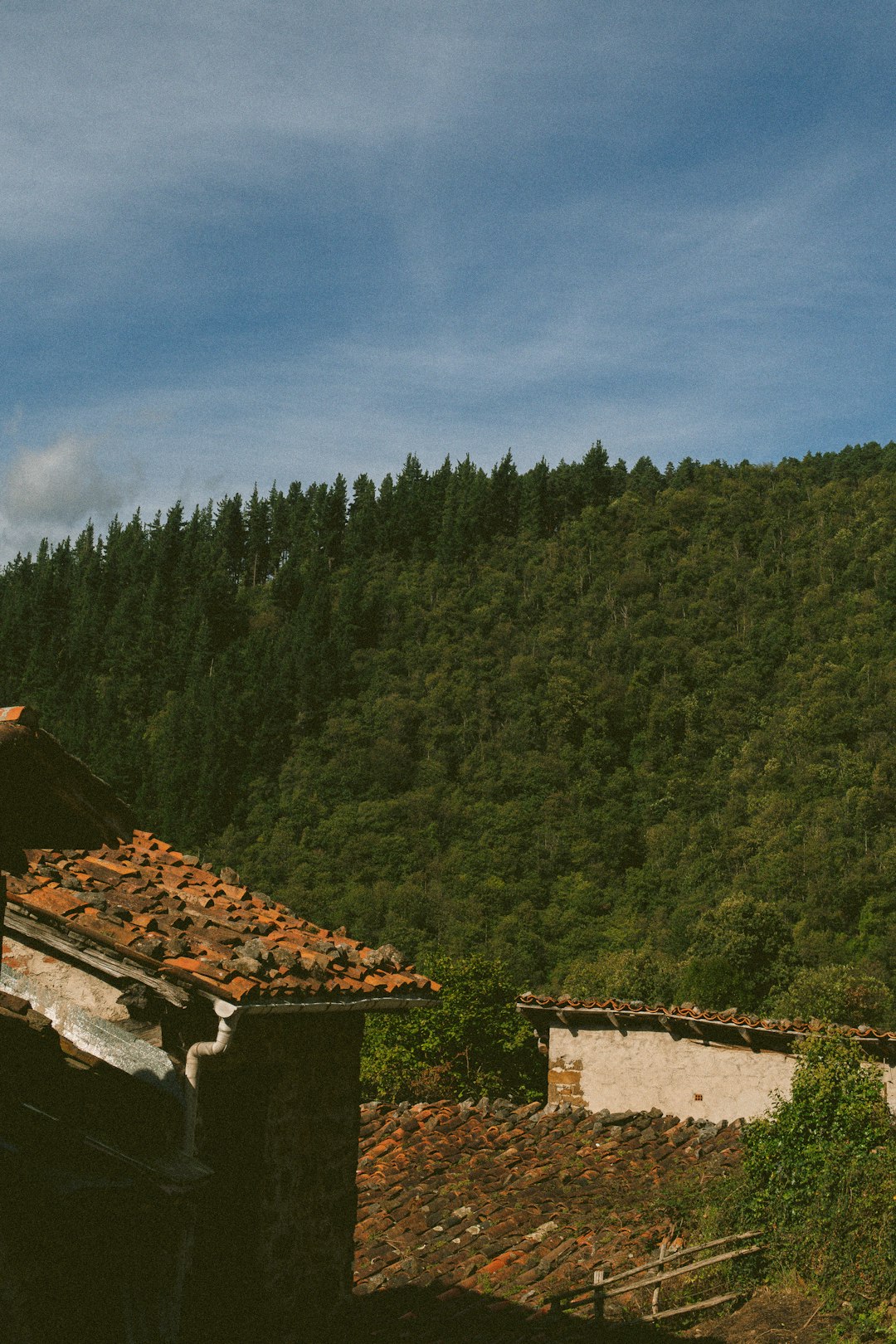
When looking to sell your Idaho land for cash, there are several key strategies you can implement to ensure you get the best price possible for your property.
Research Market Trends and Prices Before listing your Idaho land for sale, it is important to research current market trends and prices in the area. This will give you a better understanding of what similar properties are selling for and help you set a competitive price for your land.
Consider Hiring a Real Estate Agent Working with a real estate agent who specializes in selling land in Idaho can be beneficial when trying to get the best price for your property. They will have valuable market knowledge and experience negotiating deals that can help you maximize your sale price.
Highlight Unique Features of Your Land To attract potential buyers and increase the perceived value of your Idaho land, make sure to highlight any unique features or amenities. Whether it's stunning views, proximity to recreational activities, or potential for development, showcasing these aspects can help justify a higher asking price.
Invest in Professional Photography High-quality photos can make a significant difference in how quickly and at what price your Idaho land sells for. Investing in professional photography that captures the beauty of your property can attract more interested buyers and ultimately lead to a higher sale price.
Market Your Land Effectively Utilize various marketing channels such as online listings, social media platforms, and local publications to reach a wider audience of potential buyers. The more exposure your Idaho land gets, the more likely you are to receive offers at or above your desired price.
Selling Idaho Land for Cash can be a complex process, but with the right approach and knowledge, you can navigate it successfully. Here are some key steps to help you sell your Idaho land for cash:
Research the Market Before putting your Idaho land up for sale, it's important to research the market. Look at recent sales of similar properties in your area to get an idea of what price range you should aim for. Understanding the market will help you set a competitive price and attract potential buyers.
Prepare Your Property To increase the value of your Idaho land and attract buyers, consider making improvements or enhancements to the property. This could include clearing any debris or clutter, improving access roads, or adding landscaping features. A well-maintained property is more likely to sell quickly and for a higher price.
Hire a Real Estate Agent Consider hiring a real estate agent who specializes in selling land in Idaho. An experienced agent can help you navigate the selling process, market your property effectively, and negotiate with potential buyers on your behalf. They can also provide valuable insights into pricing strategies and market trends.
Advertise Your Property Once your Idaho land is ready for sale, it's time to advertise it to potential buyers. Consider listing your property on online real estate platforms, social media channels, local newspapers, and other relevant outlets. Make sure to highlight key features of your land that make it attractive to buyers.
Negotiate Offers When you start receiving offers from interested buyers, be prepared to negotiate terms that are favorable to you as the seller. Consider factors like price, closing date, contingencies, and other terms of the sale. Work closely with your real estate agent to ensure that negotiations proceed smoothly.
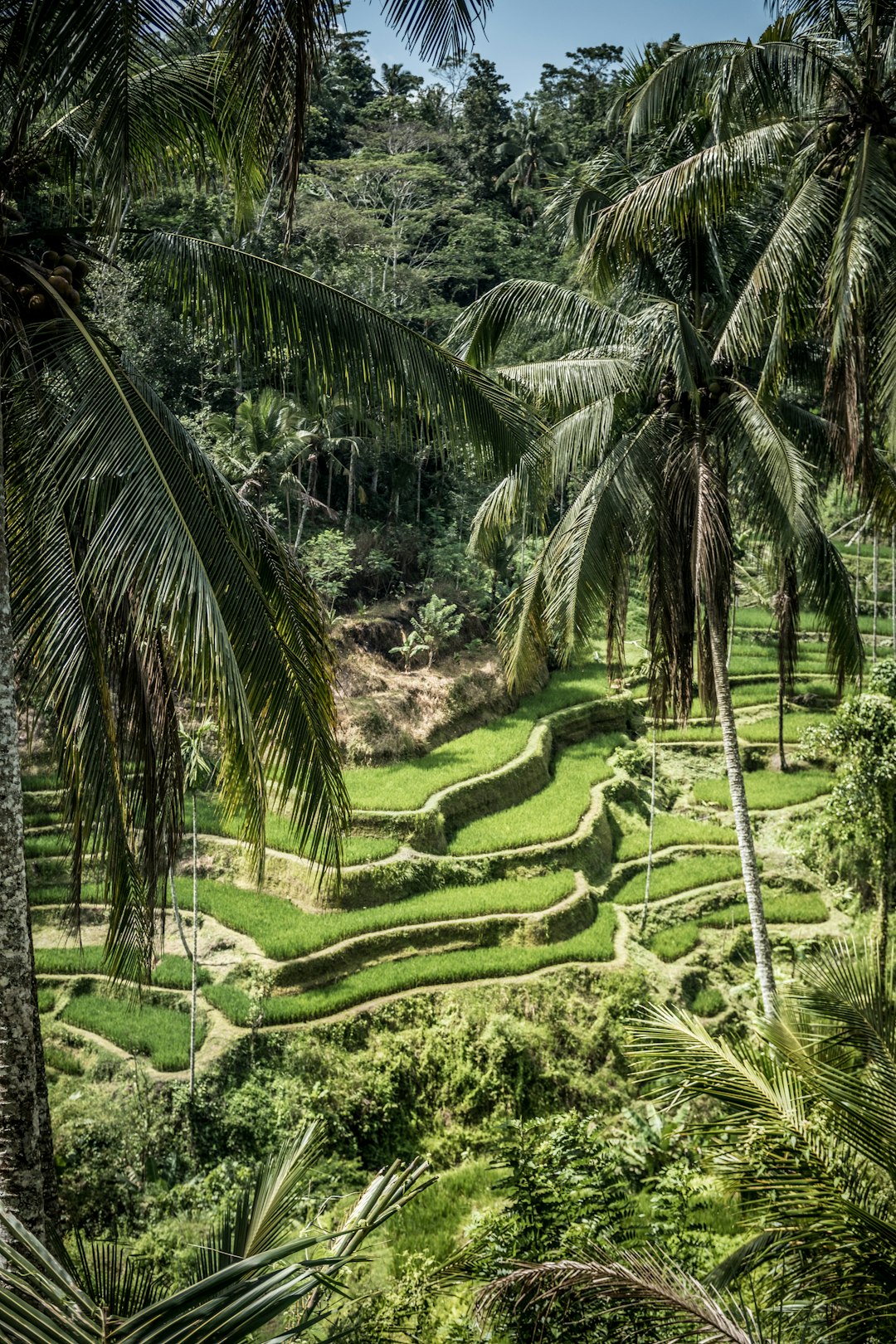
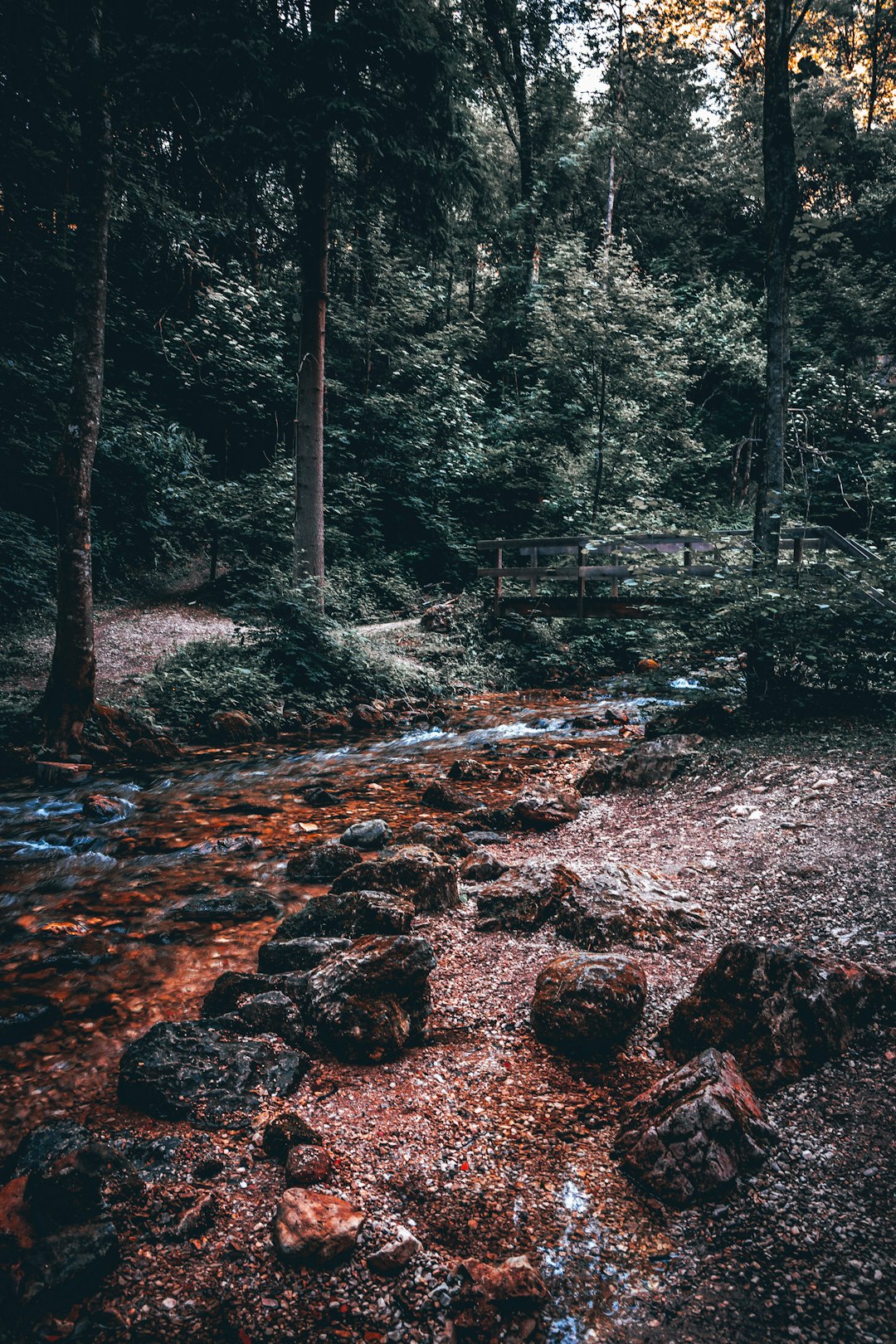
Attracting buyers and closing the deal on your Idaho land for cash requires strategic planning and effective communication. Here are some tips to help you successfully sell your property:
Highlight the Unique Features: Emphasize the unique features of your Idaho land that set it apart from other properties on the market. Whether it's stunning mountain views, access to outdoor activities, or fertile soil for farming, make sure potential buyers understand what makes your land special.
Market Your Property Effectively: Utilize online platforms, social media, and traditional marketing channels to reach a wide audience of potential buyers. Create professional listings with high-quality photos and detailed descriptions to showcase the value of your Idaho land.
Consider Cash Buyers: Cash buyers can offer a quick and hassle-free transaction when selling your Idaho land. By targeting investors or individuals with available funds, you may be able to negotiate a faster sale with fewer contingencies.
Negotiate a Fair Deal: When closing the deal on your Idaho land for cash, be prepared to negotiate terms that work in your favor. Consider factors such as price, closing timeline, and any additional conditions that could impact the sale. Stay flexible but also stand firm on what you believe is fair for both parties.
By implementing these strategies and staying proactive throughout the selling process, you can attract buyers and close the deal on your Idaho land for cash successfully.
When selling your Idaho land for cash, there are several key strategies you can implement to maximize your profit and ensure a successful transaction.
Research the Market Trends Before listing your Idaho land for sale, it is crucial to research the current market trends in the area. Understanding the demand for land in Idaho will help you set a competitive price and attract potential buyers.
Highlight Unique Features When marketing your Idaho land, make sure to highlight any unique features or amenities that set it apart from other properties. Whether it's stunning views, proximity to outdoor recreational activities, or access to utilities, showcasing these aspects can increase the perceived value of your land.
Consider Hiring a Professional Photographer Investing in professional photography can significantly enhance the visual appeal of your Idaho land listing. High-quality images can attract more attention from potential buyers and increase the likelihood of receiving competitive offers.
Work with a Real Estate Agent Partnering with a local real estate agent who specializes in selling land can streamline the process and help you navigate any legal or logistical challenges. A knowledgeable agent can also provide valuable insights on pricing strategies and negotiation tactics.
Market Effectively Online Utilize online platforms such as real estate websites, social media channels, and digital advertising to reach a wider audience of potential buyers. Creating engaging listings with detailed descriptions and high-quality photos can generate more interest in your Idaho land.
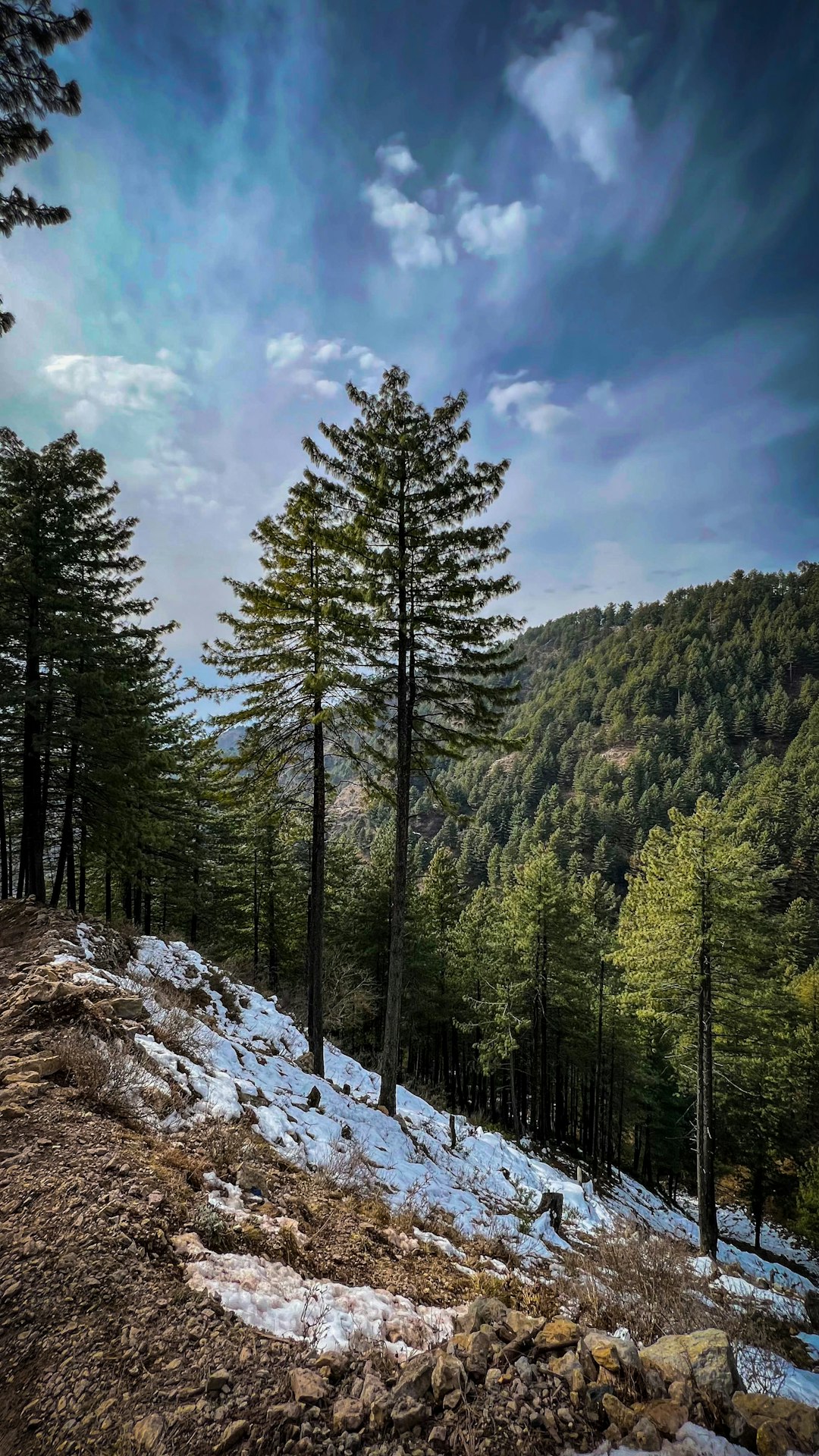
Idaho | |
|---|---|
| Nickname(s): The Gem State (official), The Potato State | |
| Motto: | |
| Anthem: "Here We Have Idaho" | |
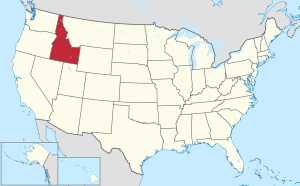 Map of the United States with Idaho highlighted | |
| Country | United States |
| Before statehood | Oregon Territory, Washington Territory, Idaho Territory |
| Admitted to the Union | July 3, 1890 (43rd) |
| Capital (and largest city) | Boise |
| Largest county or equivalent | Ada |
| Government | |
| • Governor | Brad Little (R) |
| • Lieutenant governor | Scott Bedke (R) |
| Legislature | Legislature |
| • Upper house | Senate |
| • Lower house | House of Representatives |
| Judiciary | Idaho Supreme Court |
| U.S. senators | Mike Crapo (R) Jim Risch (R) |
| U.S. House delegation | 1. Russ Fulcher (R) 2. Mike Simpson (R) (list) |
| Area | |
• Total | 83,570[2] sq mi (216,444 km2) |
| • Land | 82,644 sq mi (214,046 km2) |
| • Water | 927 sq mi (2,399 km2) 1.11% |
| • Rank | 11th |
| Dimensions | |
| • Length | 479 mi (771 km) |
| • Width | 305 mi (491 km) |
| Elevation | 5,000 ft (1,520 m) |
| Highest elevation | 12,662 ft (3,859 m) |
| Lowest elevation | 713 ft (217 m) |
| Population | |
• Total | 1,964,727 |
| • Rank | 37th |
| • Density | 23.63/sq mi (8.33/km2) |
| • Rank | 44th |
| • Median household income | $76,918[5] |
| • Income rank | 31st |
| Demonym | Idahoan |
| Language | |
| • Official language | English[6] |
| Time zones | |
| primary | UTC−07:00 (Mountain) |
| • Summer (DST) | UTC−06:00 (MDT) |
| Idaho Panhandle | UTC−08:00 (Pacific) |
| • Summer (DST) | UTC−07:00 (PDT) |
| USPS abbreviation | ID |
| ISO 3166 code | US-ID |
| Latitude | 42° N to 49° N |
| Longitude | 111°03′ W to 117°15′ W |
| Website | idaho |
| List of state symbols | |
|---|---|
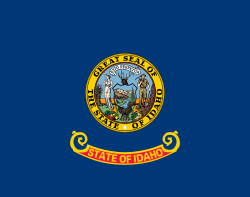 | |
 | |
| Living insignia | |
| Amphibian | Tiger salamander (Ambystoma tigrinum) |
| Bird |
|
| Fish | Cutthroat trout (Oncorhynchus clarkii) |
| Flower | Syringa (Philadelphus lewisii) |
| Horse breed | Appaloosa |
| Insect | Monarch butterfly (Danaus plexippus) |
| Tree | Western white pine (Pinus monticola) |
| Inanimate insignia | |
| Dance | Square dance |
| Food |
|
| Fossil | Hagerman horse (Equus simplicidens) |
| Gemstone | Star garnet |
| Soil | Threebear |
| State route marker | |
 | |
| Lists of United States state symbols | |
Idaho (/ˈaɪdəhoʊ/ EYE-də-hoh) is a landlocked state in the Pacific Northwest and Mountain West subregions of the Western United States. It borders Montana and Wyoming to the east, Nevada and Utah to the south, and Washington and Oregon to the west; the state shares a small portion of the Canada–United States border to the north with the Canadian province of British Columbia. Idaho's state capital and largest city is Boise. With an area of 83,569 square miles (216,440 km2), Idaho is the 14th-largest state by land area. The state has a population of approximately 2.0 million people, it ranks as the 13th-least populous and the seventh-least densely populated of the 50 U.S. states.
For thousands of years, and prior to European colonization, Idaho had been inhabited by native peoples. In the early 19th century, Idaho was considered part of the Oregon Country, an area which was disputed between the U.S. and the British Empire. Idaho officially became a U.S. territory with the signing of the Oregon Treaty of 1846, but a separate Idaho Territory was not organized until 1863, instead being included for periods in Oregon Territory and Washington Territory. The state was eventually admitted to the Union on July 3, 1890, becoming the 43rd state.
Forming part of the Pacific Northwest (and the associated Cascadia bioregion), Idaho is divided into several distinct geographic and climatic regions. The state's north, the relatively isolated Idaho Panhandle, is closely linked with Eastern Washington, with which it shares the Pacific Time Zone—the rest of the state uses the Mountain Time Zone. The state's south includes the Snake River Plain (which has most of the population and agricultural land), and the southeast incorporates part of the Great Basin. Idaho is quite mountainous and contains several stretches of the Rocky Mountains. The United States Forest Service holds about 38% of Idaho's land, the highest proportion of any state.[7]
Industries significant for the state economy include manufacturing, agriculture, mining, forestry, and tourism. Several science and technology firms are either headquartered in Idaho or have factories there, and the state also contains the Idaho National Laboratory, which is the country's largest Department of Energy facility. Idaho's agricultural sector supplies many products, but the state is best known for its potato crop, which comprises around one-third of the nationwide yield. The official state nickname is the "Gem State".[8]
The name's origin remains a mystery.[9] In the early 1860s, when the U.S. Congress was considering organizing a new territory in the Rocky Mountains, the name "Idaho" was suggested by George M. Willing, a politician posing as an unrecognized delegate from the unofficial Jefferson Territory.[10] Willing claimed that the name was derived from a Shoshone term meaning "the sun comes from the mountains" or "gem of the mountains",[11] but it was revealed later that there was no such term and Willing claimed that he had been inspired to coin the name when he met a little girl named Ida.[12] Since the name appeared to be fabricated, the U.S. Congress ultimately decided to name the area Colorado Territory instead when it was created in February 1861, but by the time this decision was made, the town of Idaho Springs, Colorado had already been named after Willing's proposal.
The same year Congress created Colorado Territory, a county called Idaho County was created in eastern Washington Territory. The county was named after a steamship named Idaho, which was launched on the Columbia River in 1860. It is unclear whether the steamship was named before or after Willing's claim was revealed. Regardless, part of Washington Territory, including Idaho County, was used to create Idaho Territory in 1863.[13] Idaho Territory would later change its boundaries to the area that became the U.S. state.[14]
Humans may have been present in the Idaho area as long as 14,500 years ago. Excavations at Wilson Butte Cave near Twin Falls in 1959 revealed evidence of human activity, including arrowheads, that rank among the oldest dated artifacts in North America. American Indian peoples predominant in the area included the Nez Percé in the north and the Northern and Western Shoshone in the south.[15]
A Late Upper Paleolithic site was identified at Cooper's Ferry in western Idaho near the town of Cottonwood by archaeologists in 2019. Based on evidence found at the site, first people lived in this area 15,300 to 16,600 years ago, predating the Beringia land bridge by about a thousand years. The discoverers emphasized that they possess similarities with tools and artifacts discovered in Japan that date from 16,000 to 13,000 years ago.[15][16] The discovery also showed that the first people might not have come to North America by land, as previously theorized. On the contrary, they probably came through the water, using a Pacific coastal route.[17]
The most parsimonious explanation we think is that people came down the Pacific Coast, and as they encountered the mouth of the Columbia River, they essentially found an off-ramp from this coastal migration and also found their first viable interior route to the areas that are south of the ice sheet.[16]
An early presence of French-Canadian trappers is visible in names and toponyms: Nez Percé, Cœur d'Alène, Boisé, Payette. Some of these names appeared prior to the Lewis and Clark and Astorian expeditions, which included significant numbers of French and Métis guides recruited for their familiarity with the terrain.[citation needed]
Idaho, as part of the Oregon Country, was claimed by both the United States and Great Britain until the United States gained undisputed jurisdiction in 1846. From 1843 to 1859, present-day Idaho was under the de facto jurisdiction of the Provisional Government of Oregon. When Oregon became a state in 1859, what is now Idaho was situated in what remained of the original Oregon Territory, designated as the Washington Territory.
Between 1849 and the creation of the Idaho Territory in 1863, parts of present-day Idaho were included in the Oregon, Washington, and Dakota Territories. The new Idaho territory included present-day Idaho, Montana, and most of Wyoming. The Lewis and Clark expedition crossed Idaho in 1805 on the way to the Pacific, and in 1806, on the return trip, largely following the Clearwater River in both directions. The first non-indigenous settlement was Kullyspell House, established on the shore of Lake Pend Oreille in 1809 by David Thompson of the North West Company for fur trading.[18][19] In 1812 Donald Mackenzie, working for the Pacific Fur Company at the time, established a post on the lower Clearwater River near present-day Lewiston. This post, known as "MacKenzie's Post" or "Clearwater", operated until the Pacific Fur Company was bought out by the North West Company in 1813, after which the post was abandoned.[20][21] The first organized non-indigenous communities within the present borders of Idaho were established by Mormon pioneers in 1860.[22][23] The first permanent, substantial incorporated community was Lewiston, in 1861. Early in its history, Idaho saw a large influx of Chinese immigrants, who by 1870 made up about 28.5% of the territory's population.[24]
Idaho achieved statehood in 1890, following a difficult start as a territory, including the chaotic transfer of the territorial capital from Lewiston to Boise,[25] disenfranchisement of Mormon polygamists upheld by the U.S. Supreme Court in 1890,[26] and a federal attempt to split the territory between Washington Territory, which gained statehood in 1889, a year before Idaho, and the state of Nevada which had been a state since 1864.[27]
Idaho was one of the hardest hit of the Pacific Northwest states during the Great Depression.[28] Prices plummeted for Idaho's major crops: in 1932 a bushel of potatoes brought only ten cents compared to 1919 for $1.51, while Idaho farmers saw their annual income of $686 in 1929 drop to $250 by 1932.[29]
In recent years, Idaho has expanded its commercial base as a tourism and agricultural state to include science and technology industries. Science and technology have become the largest single economic center (over 25% of the state's total revenue) within the state and are greater than agriculture, forestry and mining combined.[30]
During the COVID-19 pandemic, Idaho enacted statewide crisis standards of care as COVID-19 patients overwhelmed hospitals.[31] The state had one of the lowest vaccination rates in the country as of mid-October 2021.[32]
This section needs additional citations for verification. (April 2022) |
Idaho shares a border with six U.S. states and one Canadian province. The states of Washington and Oregon are to the west, Nevada and Utah are to the south, and Montana and Wyoming are to the east. Idaho also shares a short border with the Canadian province of British Columbia to the north.[33]

The landscape is rugged, with some of the largest unspoiled natural areas in the United States. For example, at 2.3 million acres (930,000 ha), the Frank Church-River of No Return Wilderness Area is the largest contiguous area of protected wilderness in the continental United States. Idaho is a Rocky Mountain state with abundant natural resources and scenic areas. The state has snow-capped mountain ranges, rapids, vast lakes and steep canyons. The waters of the Snake River run through Hells Canyon, the deepest gorge in the United States. Shoshone Falls falls down cliffs from a height greater than Niagara Falls.[34]
By far, the most important river in Idaho is the Snake River, a major tributary of the Columbia River. The Snake River flows from Yellowstone in northwestern Wyoming through the Snake River Plain in southern Idaho before turning north, leaving the state at Lewiston before joining the Columbia in Kennewick. Other major rivers are the Clark Fork/Pend Oreille River, the Spokane River, and, many major tributaries of the Snake River, including the Clearwater River, the Salmon River, the Boise River, and the Payette River. The Salmon River empties into the Snake in Hells Canyon and forms the southern boundary of Nez Perce County on its north shore, of which Lewiston is the county seat. The Port of Lewiston, at the confluence of the Clearwater and the Snake Rivers is the farthest inland seaport on the West Coast at 465 river miles from the Pacific at Astoria, Oregon.[35]
The vast majority of Idaho's population lives in the Snake River Plain, a valley running from across the entirety of southern Idaho from east to west. The valley contains the major cities of Boise, Meridian, Nampa, Caldwell, Twin Falls, Idaho Falls, and Pocatello. The plain served as an easy pass through the Rocky Mountains for westward-bound settlers on the Oregon Trail, and many settlers chose to settle the area rather than risking the treacherous route through the Blue Mountains and the Cascade Range to the west. The western region of the plain is known as the Treasure Valley, bound between the Owyhee Mountains to the southwest and the Boise Mountains to the northeast. The central region of the Snake River Plain is known as the Magic Valley.

Idaho's highest point is Borah Peak, 12,662 ft (3,859 m), in the Lost River Range north of Mackay. Idaho's lowest point, 710 ft (216 m), is in Lewiston, where the Clearwater River joins the Snake River and continues into Washington. The Sawtooth Range is often considered Idaho's most famous mountain range.[36] Other mountain ranges in Idaho include the Bitterroot Range, the White Cloud Mountains, the Lost River Range, the Clearwater Mountains, and the Salmon River Mountains.
Salmon-Challis National Forest is located in the east central sections of the state, with Salmon National Forest to the north and Challis National Forest to the south. The forest is in an area known as the Idaho Cobalt Belt, which consists of a 34 miles (55 km) long geological formation of sedimentary rock that contains some of the largest cobalt deposits in the U.S.[37]
Idaho has two time zones, with the dividing line approximately midway between Canada and Nevada. Southern Idaho, including the Boise metropolitan area, Idaho Falls, Pocatello, and Twin Falls, are in the Mountain Time Zone. A legislative error (15 U.S.C. ch. 6 §264) theoretically placed this region in the Central Time Zone, but this was corrected with a 2007 amendment.[38] Areas north of the Salmon River, including Coeur d'Alene, Moscow, Lewiston, and Sandpoint, are in the Pacific Time Zone, which contains less than a quarter of the state's population and land area.[citation needed]

Idaho's climate varies widely. Although the state's western border is about 330 miles (530 km) from the Pacific Ocean, the maritime influence is still felt in Idaho; especially, in the winter when cloud cover, humidity, and precipitation are at their maximum extent. This influence has a moderating effect in the winter where temperatures are not as low as would otherwise be expected for a northern state with predominantly high elevations.[39] In the panhandle, moist air masses from the coast are released as precipitation over the North Central Rockies forests, creating the North American inland temperate rainforest.[40] The maritime influence is least prominent in the state's eastern part where the precipitation patterns are often reversed, with wetter summers and drier winters, and seasonal temperature differences are more extreme, showing a more semi-arid continental climate.[41]
Idaho can be hot, although extended periods over 98 °F (37 °C) are rare, except for the lowest point in elevation, Lewiston, which correspondingly sees little snow. Hot summer days are tempered by the low relative humidity and cooler evenings during summer months since, for most of the state, the highest diurnal difference in temperature is often in the summer.[42] Winters can be cold, although extended periods of bitter cold weather below zero are unusual. Idaho's all-time highest temperature of 118 °F (48 °C) was recorded at Orofino on July 28, 1934; the all-time lowest temperature of −60 °F (−51 °C) was recorded at Island Park Dam on January 18, 1943.
| Monthly normal high and low temperatures for various Idaho cities. (°F) | ||||||||||||
| City | Jan | Feb | Mar | Apr | May | Jun | Jul | Aug | Sep | Oct | Nov | Dec |
|---|---|---|---|---|---|---|---|---|---|---|---|---|
| Boise | 38/24 | 45/27 | 55/33 | 62/38 | 72/46 | 81/53 | 91/59 | 90/59 | 79/50 | 65/40 | 48/31 | 38/23 |
| Lewiston | 42/30 | 47/32 | 55/36 | 62/41 | 72/48 | 79/54 | 91/61 | 90/60 | 80/52 | 63/42 | 49/35 | 41/30 |
| Pocatello | 33/16 | 38/19 | 49/27 | 59/33 | 68/40 | 78/46 | 88/52 | 88/51 | 76/42 | 62/33 | 45/24 | 33/16 |
| Orofino | 38/25 | 46/28 | 55/32 | 64/38 | 72/44 | 80/50 | 89/54 | 90/53 | 79/45 | 63/36 | 46/31 | 37/26 |
| [43] | ||||||||||||



As of 2018:[44]
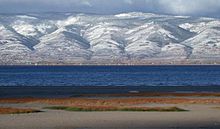


| Census | Pop. | Note | %± |
|---|---|---|---|
| 1870 | 14,999 | — | |
| 1880 | 32,610 | 117.4% | |
| 1890 | 88,548 | 171.5% | |
| 1900 | 161,772 | 82.7% | |
| 1910 | 325,594 | 101.3% | |
| 1920 | 431,866 | 32.6% | |
| 1930 | 445,032 | 3.0% | |
| 1940 | 524,873 | 17.9% | |
| 1950 | 588,637 | 12.1% | |
| 1960 | 667,191 | 13.3% | |
| 1970 | 712,567 | 6.8% | |
| 1980 | 943,935 | 32.5% | |
| 1990 | 1,006,749 | 6.7% | |
| 2000 | 1,293,953 | 28.5% | |
| 2010 | 1,567,582 | 21.1% | |
| 2020 | 1,839,106 | 17.3% | |
| 2023 (est.) | 1,964,726 | 6.8% | |
| Source: 1910–2020[45]
2023[46] | |||
The United States Census Bureau determined Idaho's population was 1,900,923 on July 1, 2021, a 21% increase since the 2010 U.S. census.[47]
Idaho had an estimated population of 1,754,208 in 2018, which was an increase of 37,265, from the prior year and an increase of 186,626, or 11.91%, since 2010. This included a natural increase since the last census of 58,884 (111,131 births minus 52,247 deaths) and an increase due to net migration of 75,795 people into the state. There are large numbers of Americans of English and German ancestry in Idaho. Immigration from outside the United States resulted in a net increase of 14,522 people, and migration within the country produced a net increase of 61,273 people.
According to the American Immigration Council, in 2018, the top countries of origin for Idaho's immigrants were Mexico, Canada, the Philippines, China and Germany.[48]
Idaho's population increased by 17.3% from 2010 to 2020, the second fastest rate of growth of any state that decade.[49]
Nampa, about 20 miles (30 km) west of downtown Boise, became the state's second largest city in the late 1990s, passing Pocatello and Idaho Falls. Nampa's population was under 29,000 in 1990 and grew to over 81,000 by 2010. Located between Nampa and Boise, Meridian also experienced high growth, from fewer than 10,000 residents in 1990 to more than 75,000 in 2010 and is now Idaho's third largest city. Growth of 5% or more over the same period has also been observed in Caldwell, Coeur d'Alene, Post Falls, and Twin Falls.[50]
From 1990 to 2010, Idaho's population increased by over 560,000 (55%). The Boise metropolitan area (officially known as the Boise City-Nampa, ID Metropolitan Statistical Area) is Idaho's largest. Other metropolitan areas, in order of size, are Coeur d'Alene, Idaho Falls, Pocatello and Lewiston.[51]
According to HUD's 2022 Annual Homeless Assessment Report, there were an estimated 1,998 homeless people in Idaho.[52][53]

| Racial composition | 1970[54] | 1990[54] | 2000[55] | 2010[56] | 2020[57] |
|---|---|---|---|---|---|
| White or European American | 98.1% | 94.4% | 90.1% | 89.1% | 82.1% |
| Indigenous | 0.9% | 1.4% | 1.4% | 1.4% | 1.4% |
| Asian | 0.5% | 0.9% | 0.9% | 1.2% | 1.5% |
| Black | 0.3% | 0.3% | 0.4% | 0.6% | 0.9% |
| Native Hawaiian and other Pacific Islander |
— | — | 0.1% | 0.1% | 0.2% |
| Other race | 0.2% | 3.0% | 4.2% | 5.1% | 5.6% |
| Two or more races | — | — | 2.0% | 2.5% | 8.3% |

According to the 2017 American Community Survey, 12.2% of Idaho's population was of Hispanic or Latino origin, of any race: Mexican (10.6%), Puerto Rican (0.2%), Cuban (0.1%), and other Hispanic or Latino origin (1.3%).[58] The five largest ancestry groups were: German (17.5%), English (16.4%), Irish (9.3%), American (8.1%), and Scottish (3.2%).[59]
The majority of Idaho's population is of European descent. Most of Idaho's white residents trace their ancestry to the United Kingdom, Germany, Ireland, France, Italy, or Poland. There are also small numbers of Native Americans, Asians, and African Americans in the state.[60]
In 2018, the top countries of origin for Idaho's immigrants were Mexico, Canada, the Philippines, China and Germany.[61]
There are five federally recognized Native American tribes in the state. These tribes include the Shoshone-Bannock, the Shoshone-Paiute, the Coeur d’Alene, the Kootenai and the Nez Perce.[62]

| Non-Hispanic White 50–60% 60–70% 70–80% 80–90% 90%+ |
Note: Births in table don't add up, because Hispanics are counted both by their ethnicity and by their race, giving a higher overall number.
| Race | 2013[63] | 2014[64] | 2015[65] | 2016[66] | 2017[67] | 2018[68] | 2019[69] | 2020[70] | 2021[71] | 2022[72] |
|---|---|---|---|---|---|---|---|---|---|---|
| White: | 21,246 (94.9%) | 21,696 (94.8%) | 21,618 (94.7%) | ... | ... | ... | ... | ... | ... | ... |
| > Non-Hispanic White | 17,951 (80.2%) | 18,188 (79.5%) | 18,087 (79.2%) | 17,543 (78.0%) | 17,151 (77.3%) | 16,574 (77.4%) | 16,959 (76.9%) | 16,463 (76.4%) | 17,039 (76.0%) | 16,894 (75.4%) |
| Asian | 491 (2.2%) | 501 (2.2%) | 516 (2.3%) | 363 (1.6%) | 366 (1.7%) | 348 (1.6%) | 350 (1.6%) | 327 (1.5%) | 380 (1.7%) | 378 (1.7%) |
| Black | 225 (1.0%) | 250 (1.1%) | 287 (1.2%) | 217 (1.0%) | 243 (1.1%) | 233 (1.1%) | 261 (1.2%) | 265 (1.2%) | 271 (1.2%) | 258 (1.2%) |
| American Indian | 421 (1.9%) | 429 (1.9%) | 406 (1.8%) | 261 (1.2%) | 337 (1.5%) | 285 (1.3%) | 291 (1.3%) | 206 (0.9%) | 232 (1.0%) | 260 (1.2%) |
| Hispanic (of any race) | 3,422 (15.3%) | 3,651 (16.0%) | 3,645 (16.0%) | 3,614 (16.1%) | 3,598 (16.2%) | 3,549 (16.6%) | 3,702 (16.8%) | 3,687 (17.1%) | 3,887 (17.3%) | 4,002 (17.9%) |
| Total Idaho | 22,383 (100%) | 22,876 (100%) | 22,827 (100%) | 22,482 (100%) | 22,181 (100%) | 21,403 (100%) | 22,063 (100%) | 21,533 (100%) | 22,427 (100%) | 22,391 (100%) |
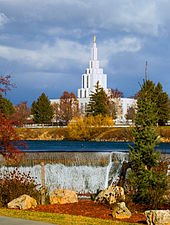
Religious self-identification, per Public Religion Research Institute's 2022 American Values Survey[73]
According to the Pew Research Center on Religion & Public Life, the self-identified religious affiliations of Idahoans over the age of 18 in 2008 and 2014 were:
| Denomination | 2008[74] | 2014[75][76] |
|---|---|---|
| Christian, including: | 81% | 67% |
| * Evangelical Protestant | 22% | 21% |
| * Mainline Protestant | 16% | 16% |
| * Catholic | 18% | 10% |
| * Eastern Orthodox | < 0.5% | 1% |
| * Historically Black Protestant | < 0.5% | < 1% |
| * The Church of Jesus Christ of Latter-day Saints | 23% | 19% |
| * Jehovah's Witnesses | 1% | < 1% |
| * Other Christian | < 0.5% | < 1% |
| Unaffiliated, including: | 18% | 27% |
| * Nothing in particular | n/d | 22% |
| * Agnostic | n/d | 3% |
| * Atheist | n/d | 2% |
| Non-Christian faiths, including: | n/d | 4% |
| * Muslim | < 0.5% | 1% |
| * Jewish | < 0.5% | < 1% |
| * Buddhist | < 0.5% | < 1% |
| * Hindu | < 0.5% | < 1% |
| * Other world religions | < 0.5% | < 1% |
| * Other faiths (New Age, Native American, etc.) | n/d | 2% |
| Don't know/refused | < 0.5% | 1% |
According to the Association of Religion Data Archives, the largest denominations by number of members in 2010 were The Church of Jesus Christ of Latter-day Saints with 409,265; the Catholic Church with 123,400; the non-denominational Protestants with 62,637; and the Assemblies of God with 22,183.[77] In 2020, the Association of Religion Data Archives revealed Mormons remained the largest with 462,069, followed by Catholics (203,790), and non-denominational Protestantism (98,996).[78]
In 2022, the Public Religion Research Institute's American Values Survey estimated altogether, 72% of the population was Christian, 26% were religiously unaffiliated, and 3% were New Agers. Of its Christian population, 37% were Protestant, 24% Mormon, 9% Catholic, and 2% Jehovah's Witnesses.
English is the state's predominant language. Minority languages include Spanish[79] and various Native American languages.
Idaho's gross state product was $118.8 billion in 2023[80] and the state's per capita income that year was estimated to be $59,035.[81]
As of 2016, the state's total employment was 562,282, and the total employer establishments were 45,826.[82]
Important industries in Idaho are food processing, lumber and wood products, machinery, chemical products, paper products, electronics manufacturing, silver and other mining, and tourism. The world's largest factory for barrel cheese, the raw product for processed cheese, is in Gooding, Idaho. It has a capacity of 120,000 metric tons per year of barrel cheese and belongs to the Glanbia group.[83]
Hewlett-Packard has operated a large plant in Boise since the 1970s, which is devoted primarily to LaserJet printers production.[84]
Idaho has a state gambling lottery, which contributed $333.5 million in payments to all Idaho public schools and Idaho higher education from 1990 to 2006.[85]
Tax is collected by the Idaho State Tax Commission.[86]
The state personal income tax is a flat 5.8%. Idahoans may apply for state tax credits for taxes paid to other states, as well as for donations to Idaho state educational entities and some nonprofit youth and rehabilitation facilities.[citation needed]
The state sales tax is 6% with a very limited, selective local option up to 6.5%. Sales tax applies to the sale, rental or lease of tangible personal property and some services. Food is taxed, but prescription drugs are not. Hotel, motel, and campground accommodations are taxed at a higher rate (7% to 11%). Some jurisdictions impose local option sales tax.[87]
The sales tax was introduced at 3% in 1965, easily approved by voters,[88] where it remained at 3% until 1983.[89]
Idaho has a regulated electricity market, with the Idaho Public Utilities Commission regulating the three major utilities of Avista Utilities, Idaho Power, and Rocky Mountain Power.[90]
Idaho consumes almost four times more energy than it produces. In 2022, renewable energy sources accounted for 75% of the total electricity generated in the state, the fourth-highest share of renewable electricity for any state.[91] In 2022, half of Idaho's utility-scale (1 megawatt or larger) electricity generating capacity is at hydroelectric power plants, 25% from natural gas, 17% of the state's total in-state electricity net generation came from wind facilities, 4% from solar and 1% from geothermal.[92] Washington State provides most of the natural gas used in Idaho through one of the two major pipeline systems supplying the state.[citation needed]
Idaho has an upper-boundary estimate of development potential to generate 44,320 GWh/year from 18,076 MW of wind power, and 7,467,000 GWh/year from solar power using 2,061,000 MW of photovoltaics (PV), including 3,224 MW of rooftop photovoltaics, and 1,267,000 MW of concentrated solar power.[93] Idaho had 973 MW of installed wind power as of 2020.[94]
The Idaho Transportation Department is the government agency responsible for Idaho's transportation infrastructure, including operations and maintenance, as well as planning for future needs. The agency is also responsible for overseeing the disbursement of federal, state, and grant funding for the transportation programs of the state.[95]


Major federal aid highways in Idaho:
Major airports include the Boise Airport which serves the southwest region of Idaho and the Spokane International Airport (in Spokane, Washington) which serves northern Idaho. Other airports with scheduled service are the Pullman-Moscow Regional Airport serving the Palouse; the Lewiston-Nez Perce County Airport, serving the Lewis-Clark Valley and north central and west central Idaho; The Magic Valley Regional Airport in Twin Falls; Friedman Memorial Airport in Hailey; the Idaho Falls Regional Airport; and the Pocatello Regional Airport.[96]
Idaho is served by three transcontinental railroads. The Burlington Northern Santa Fe (BNSF) connects the Idaho Panhandle with Seattle, Portland, and Spokane to the west, and Minneapolis and Chicago to the east. The BNSF travels through Kootenai, Bonner, and Boundary counties. The Union Pacific Railroad crosses North Idaho, entering from Canada through Boundary and Bonner, and proceeding to Spokane. Canadian Pacific Railway uses Union Pacific Railroad tracks in North Idaho, carrying products from Alberta to Spokane and Portland, Oregon. Amtrak's Empire Builder crosses northern Idaho, with its only stop being in Sandpoint. Montana Rail Link also operates between Billings, Montana, and Sandpoint, Idaho.
The Union Pacific Railroad also crosses southern Idaho traveling between Portland, Oregon, Green River, Wyoming, and Ogden, Utah, and serves Boise, Nampa, Twin Falls, and Pocatello.
The Port of Lewiston is the farthest inland Pacific port on the west coast. A series of dams and locks on the Snake River and Columbia River facilitate barge travel from Lewiston to Portland, where goods are loaded on ocean-going vessels.[97]

The constitution of Idaho is roughly modeled on the national constitution, with several additions. The constitution defines the form and functions of the state government, and may be amended through plebiscite. The state constitution presently requires the state government to maintain a balanced budget.[98]
All of Idaho's state laws are contained in the Idaho Code and Statutes. The code is amended through the legislature with the approval of the governor. Idaho still operates under its original (1889) state constitution.[98]
Idaho has one of the strictest abortion laws in the nation.[99] In April 2023, Idaho became the first state to restrict interstate travel for abortion services.[100][101] Nearly all abortions are banned and private citizens can sue abortion providers. The Idaho Supreme Court has ruled there is no constitutional right to abortion. A federal judge ruled in 2022 that doctors cannot be punished for performing an abortion to protect a patient's health.[102] The state abortion laws have led to an outmigration of physicians who specialize in maternal/fetal care.[103]
The constitution of Idaho provides for three branches of government: the executive, legislative and judicial branches. Idaho has a bicameral legislature, elected from 35 legislative districts, each represented by one senator and two representatives.
Since 1946, statewide elected constitutional officers have been elected to four-year terms. They include: Governor, Lieutenant Governor, Secretary of State, Idaho state controller (Auditor before 1994), Treasurer, Attorney General, and Superintendent of Public Instruction.
Last contested in 1966, Inspector of Mines was an originally elected constitutional office. Afterward it was an appointed position and ultimately done away with entirely in 1974.
Idaho's government has an alcohol monopoly; the Idaho State Liquor Division.
The governor of Idaho serves a four-year term and is elected during what is nationally referred to as midterm elections. As such, the governor is not elected in the same election year as the president of the United States. The current governor is Republican Brad Little, who was first elected in 2018 and re-elected in 2022. Idaho is 1 of 13 states with no term limits for Governor.[104]
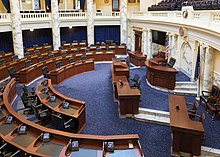
Idaho's legislature is part-time. Because of this, Idaho's legislators are considered "citizen legislators", meaning their position as a legislator is not their main occupation. However, the session may be extended if necessary, and often is.
Terms for both the Senate and House of Representatives are two years. Legislative elections occur every even numbered year.
Both of Idaho's state legislative chambers have been continuously controlled by Republicans since 1960, although Democratic legislators are routinely elected from Boise, Pocatello, Blaine County and the northern Panhandle.
The highest court in Idaho is the Idaho Supreme Court. There is also an intermediate appellate court, the Idaho Court of Appeals, which hears cases assigned to it from the Supreme Court. The state's District Courts serve seven judicial districts.[105]
This section needs additional citations for verification. (November 2020) |

| Party | Number of Voters | Percentage | |
|---|---|---|---|
| Republican | 604,287 | 59.57% | |
| Unaffiliated | 266,604 | 26.28% | |
| Democratic | 127,623 | 12.58% | |
| Libertarian | 11,575 | 1.14% | |
| Constitution | 4,294 | 0.42% | |
| Total | 1,014,383 | 100.00% | |
After the Civil War, many Midwestern and Southern Democrats moved to the Idaho Territory. As a result, the early territorial legislatures were solidly Democrat-controlled. In contrast, most of the territorial governors were appointed by Republican presidents and were Republicans. This led to sometimes-bitter clashes between the two parties, including a range war with the Democrats backing the sheepherders and the Republicans the cattlemen, which ended in the "Diamondfield" Jack Davis murder trial. In the 1880s, Republicans became more prominent in local politics.
In 1864, Clinton DeWitt Smith removed the territorial seal and the state constitution from a locked safe, and took them to Boise. This effectively moved the capital from where they were stored (Lewiston, Idaho) to the current capital, Boise.[107]
Since statehood, the Republican Party has usually been the dominant party in Idaho. At one time, Idaho had two Democratic parties, one being the mainstream and the other called the Anti-Mormon Democrats, lasting into the early 20th century. In the 1890s and early 1900s, the Populist Party enjoyed prominence, while the Democratic Party maintained a brief dominance in the 1930s during the Great Depression. Since World War II, most statewide-elected officials have been Republicans, though the Democrats did hold the majority in the House (by one seat) in 1958 and the governorship from 1971 to 1995.
Idaho Congressional delegations have also been generally Republican since statehood. Several Idaho Democrats have had electoral success in the U.S. House of Representatives over the years, but the Senate delegation has been a Republican stronghold for decades. Several Idaho Republicans, including current Senators Mike Crapo and Jim Risch, have won reelection to the Senate, but only Frank Church has won reelection as a Democrat. Church's 1974 victory was the last win for his party for either Senate seat, and Walt Minnick's 2008 victory in the 1st congressional district was the last Democratic win in any congressional race.
In modern times, Idaho has been a reliably Republican state in presidential politics. It has not supported a Democrat for president since 1964. Even in that election, Lyndon Johnson defeated Barry Goldwater in the state by fewer than two percentage points, compared to a landslide nationally. In 2004, Republican George W. Bush carried Idaho by a margin of 38 percentage points and with 68.4% of the vote, winning in 43 of 44 counties. Only Blaine County, which contains the Sun Valley ski resort, supported John Kerry, who owns a home in the area. In 2008 Barack Obama's 36.1 percent[108] showing was the best for a Democratic presidential candidate in Idaho since 1976. However, Republican margins were narrower in 1992 and 1976.
In the 2006 elections, Republicans, led by gubernatorial candidate Butch Otter, won all the state's constitutional offices and retained both of the state's seats in the House. However, Democrats picked up several seats in the Idaho Legislature, notably in the Boise area.[109]
Republicans lost one of the House seats in 2008 to Minnick, but Republican Jim Risch retained Larry Craig's Senate seat for the GOP by a comfortable margin.[110] Minnick lost his seat in the 2010 election to Republican State Rep. Raul Labrador.
Idaho retains the death penalty. Pending the outcome of a legal challenge on a bill passed on 20 March 2023, authorized methods of execution include the firing squad.[111] Abortion care is severely restricted in Idaho.[112]
This section needs additional citations for verification. (April 2022) |
As of January 2020, the State of Idaho contains 105 school districts[113] and 62 charter schools.[114] The school districts range in enrollment from two to 39,507 students.[115]
Idaho school districts are governed by elected school boards, which are elected in November of odd-numbered years,[116] except for the Boise School District, whose elections are held in September.[117]



The Idaho State Board of Education oversees three comprehensive universities.[118] The University of Idaho in Moscow was the first university in the state (founded in 1889). It opened its doors in 1892 and is the land-grant institution and primary research university of the state. Idaho State University in Pocatello opened in 1901 as the Academy of Idaho, attained four-year status in 1947 and university status in 1963. Boise State University is the most recent school to attain university status in Idaho. The school opened in 1932 as Boise Junior College and became Boise State University in 1974. Lewis-Clark State College in Lewiston is the only public, non-university four-year college in Idaho. It opened as a normal school in 1893.[119]
Idaho has four regional community colleges: North Idaho College in Coeur d'Alene; College of Southern Idaho in Twin Falls; College of Western Idaho in Nampa, which opened in 2009, College of Eastern Idaho in Idaho Falls, which transitioned from a technical college in 2017.
Private institutions in Idaho are Boise Bible College, affiliated with congregations of the Christian churches and churches of Christ; Brigham Young University-Idaho in Rexburg, which is affiliated with The Church of Jesus Christ of Latter-day Saints and a sister college to Brigham Young University; The College of Idaho in Caldwell, which still maintains a loose affiliation with the Presbyterian Church; Northwest Nazarene University in Nampa; and New Saint Andrews College in Moscow, of reformed Christian theological background. McCall College is a non-affiliated two-year private college in McCall, which was founded in 2011 and later opened in 2013.
This section needs additional citations for verification. (April 2022) |
Central Idaho is home to one of North America's oldest ski resorts, Sun Valley, where the world's first chairlift was installed in 1936.[120] Other noted outdoor sites include Hells Canyon, the Salmon River, and its embarkation point of Riggins.
| Club | Sport | League |
|---|---|---|
| Boise Hawks | Baseball | Pioneer League |
| Boise State Broncos | NCAA | Div I FBS, MWC |
| Idaho Vandals | NCAA | Div I FCS, Big Sky |
| Idaho State Bengals | NCAA | Div I FCS, Big Sky |
| Idaho Falls Chukars | Baseball | Pioneer League |
| Idaho Steelheads | Ice hockey | ECHL |
| Idaho Falls Spud Kings | Ice hockey | USPHL |
The Boise Open professional golf tournament has been played at Hillcrest Country Club since 1990 as part of the Korn Ferry Tour. The Open has been part of the Korn Ferry Tour Finals since 2016.
High school sports are overseen by the Idaho High School Activities Association (IHSAA).
In 2016, Meridian's Michael Slagowski ran 800 meters in 1:48.70, one of the 35 fastest times ever run by a high school boy in the United States.[121]
The 1980 movie Bronco Billy was filmed in Boise for two months.[122] Pale Rider (1985) was primarily filmed in the Boulder Mountains and the Sawtooth National Recreation Area in central Idaho, just north of Sun Valley.[123] River Phoenix and Keanu Reeves starred in the 1991 movie My Own Private Idaho, portions of which take place in Idaho.[124][125] The 1997 film Dante's Peak was shot on location in Wallace.[126] The 2004 cult film Napoleon Dynamite takes place in Preston; the film's director, Jared Hess, attended Preston High School.[127]
{{cite web}}: CS1 maint: numeric names: authors list (link)
The transportation department also oversees federal grants to 15 rural and urban public transportation systems, provides state rail planning and rail-project development and supports bicycle and pedestrian projects.
Certain legal considerations such as ensuring clear title ownership and addressing any liens must be handled promptly. Consulting with a real estate attorney can prevent delays caused by legal issues.
Commonly required documents include the deed to the property, recent tax statements, and any easement agreements or surveys.
A strong advertising strategy including high-quality photos, clear descriptions, and broad exposure on various platforms is crucial for attracting quick interest from serious buyers.